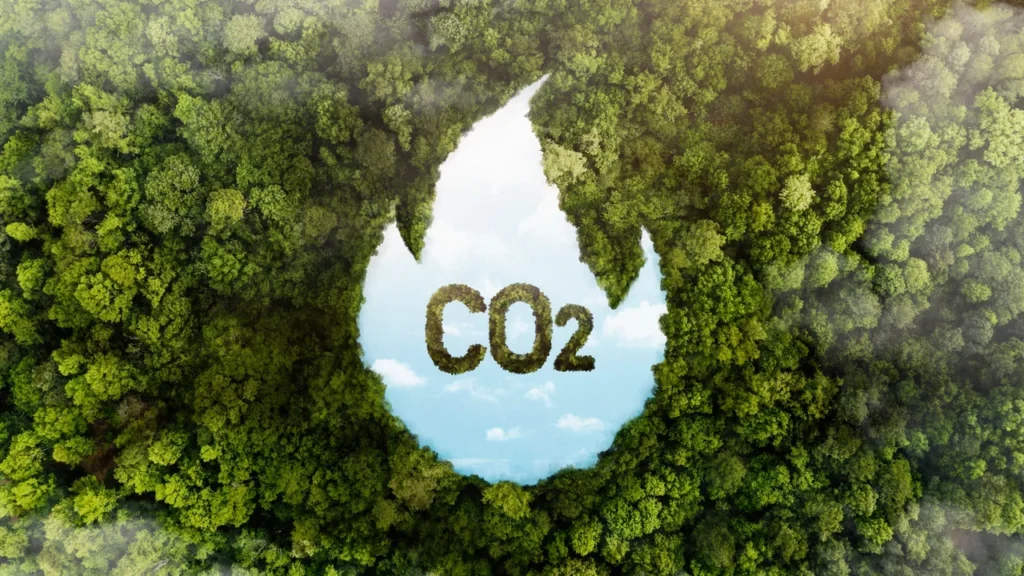As global industries work toward reducing carbon emissions and achieving long-term sustainability, carbon capture technology has emerged as one of the most promising solutions. What makes this method especially relevant today is its adaptability—not only for new industrial facilities but also for existing plants that have been operating for decades. This process, widely known as a carbon capture retrofit, allows industries to integrate advanced CO₂ capture systems into their current infrastructure without the need to rebuild entire facilities. The result is a cost-effective and practical approach to accelerating global emission reduction efforts while maintaining industrial productivity.
Introduction to Carbon Capture Retrofit in Modern Industry
Retrofitting existing plants for carbon capture has become a crucial strategy in the global fight against climate change. Instead of constructing new low-emission facilities—which can take years and require massive investments—industries are now exploring how carbon capture technologies can be seamlessly integrated into their operational systems. This approach is particularly relevant for sectors with long-life assets such as coal plants, natural gas facilities, cement factories, petrochemical plants, and steel mills.
The purpose of carbon capture retrofitting goes beyond compliance. It helps industries maintain competitiveness, meet international sustainability expectations, and position themselves for a future defined by low-carbon operations. As global governments tighten regulations and carbon pricing becomes more common, retrofitting has shifted from being an optional initiative to an essential investment.
The Rising Importance of Retrofitting Existing Facilities
Policy Shifts and Global Climate Commitments
Countries worldwide are tightening carbon regulations through emission caps, carbon taxes, and incentive programs. These changes make it increasingly challenging for older facilities to operate without addressing their carbon footprint. Governments are offering significant financial incentives to organizations that adopt carbon capture technologies, including tax credits, grants, and emissions-trading benefits. These supportive measures are making retrofitting not only feasible but financially attractive.
Retrofitting vs. Rebuilding: A Practical Comparison
Constructing a brand-new facility optimized for low-carbon operation may seem ideal, but it is rarely practical. New large-scale industrial plants often require billions of dollars and years of development. By contrast, a retrofit can be implemented in a fraction of the cost and time, all while utilizing existing assets such as boilers, turbines, reactors, and structural systems. The ability to reduce emissions without interrupting production is one of the biggest advantages of the retrofit approach.
How Carbon Capture Retrofit Works

A carbon capture retrofit involves installing systems that can separate, collect, and compress CO₂ before it is released into the atmosphere. The captured CO₂ is then either stored underground or repurposed for commercial use, such as enhanced oil recovery or industrial gas supply.
Main Components of a Retrofit System
- CO₂ Separation Unit – Removes CO₂ from flue gas using solvents, membranes, or adsorption.
- Compression System – Pressurizes CO₂ for transport or storage.
- Heat Integration System – Minimizes additional energy consumption by recycling heat within the plant.
- Monitoring and Control Systems – Ensures safe, efficient, and consistent operation.
Carbon Capture Methods Suitable for Retrofitting
Post-Combustion Capture
This method is the most widely used in retrofit projects because it works with existing combustion systems. By using chemical solvents (such as amines) to absorb CO₂ from flue gases, post-combustion systems can be added without major changes to the plant’s core operations. The primary challenge lies in energy consumption, but advancements in solvent efficiency are significantly reducing this issue.
Pre-Combustion Capture
Pre-combustion capture converts fuel into a mixture of hydrogen and CO₂ before combustion. Although highly efficient, it requires extensive modifications to plant infrastructure, making it less suitable for older plants. However, it remains a strong candidate for facilities undergoing major system upgrades.
Oxy-Fuel Combustion
In oxy-fuel systems, fuel is burned in pure oxygen instead of air, producing exhaust gas with a high concentration of CO₂ that is easier to separate. While highly efficient, the required oxygen production units and system modifications make this method more complex for retrofits.
Engineering and Operational Considerations
Integrating a carbon capture system into an existing plant requires more than just installing new equipment; it demands detailed engineering analysis to ensure structural, operational, and economic compatibility.
Space and Structural Assessment
Carbon capture units require substantial space for absorbers, regenerators, and CO₂ compression systems. Many older plants lack open areas, forcing engineers to design compact layouts or reconfigure existing structures. Load-bearing assessments are crucial to ensure that additional equipment does not compromise the plant’s structural integrity.
Energy Penalty and Efficiency Optimization
One of the most discussed challenges in carbon capture retrofits is the so-called “energy penalty.” Carbon capture systems require heat and electricity to operate, which can reduce the plant’s overall efficiency. To mitigate this, engineers integrate heat recovery systems, upgrade boilers, or incorporate renewable energy sources to offset the added load.
Cost Considerations
While retrofitting is more affordable than rebuilding, it still requires substantial investment. Costs vary depending on plant size, capture technology, storage method, and infrastructure upgrades. However, long-term benefits—including carbon credit income, regulatory compliance, and enhanced sustainability ratings—often outweigh initial costs.
Benefits of Carbon Capture Retrofit
Significant Emission Reduction
Carbon capture retrofits can reduce CO₂ emissions by up to 90%, depending on technology and operational efficiency. This makes them one of the most effective immediate solutions for hard-to-decarbonize industries such as cement, steel, and power generation.
Long-Term Sustainability Enhancement
Incorporating carbon capture supports corporate sustainability goals, improves ESG (Environmental, Social, and Governance) scores, and increases investor confidence. As sustainability reporting becomes mandatory in many regions, carbon capture retrofits help industries remain transparent and accountable for their environmental impact.
Future-Proofing Industrial Operations
Carbon capture technology is also compatible with future green advancements. Facilities that install carbon capture today can more seamlessly integrate hydrogen fuel systems, renewable energy sources, and next-generation decarbonization tools in the future. This adaptability ensures long-term operational resilience.
Challenges and Limitations
High Initial Costs
Although cheaper than building new plants, retrofits still require investments that some industries may struggle to allocate. Funding programs, partnerships, and government incentives can help mitigate these financial barriers.
Technical Constraints in Older Facilities
Plants built several decades ago may face structural limitations, outdated equipment, or insufficient space for modern carbon capture units. Retrofitting such facilities often requires creative engineering solutions or phased implementation.
CO₂ Transport and Storage Issues
Capturing CO₂ is only part of the process; transporting and storing it safely is equally important. Regions without access to pipelines or geological storage sites may face logistical challenges. Developing shared CO₂ transport networks is becoming a priority for many governments.
Case Studies of Successful Carbon Capture Retrofits
Coal-Fired Power Plant Retrofitting
Several coal power plants in North America and Europe have successfully deployed post-combustion capture systems, demonstrating that even older facilities can achieve significant emission reductions. These projects illustrate that retrofitting can extend the life of existing infrastructure while making operations more sustainable.
Cement Factory Integration
The cement industry, one of the largest industrial CO₂ emitters, has seen successful retrofit trials where advanced capture systems reduced emissions without affecting production. These projects highlight the potential for carbon capture to revolutionize traditionally hard-to-decarbonize sectors.
Natural Gas Processing Plants
Many gas processing facilities already implement CO₂ removal as part of their operations. Retrofitting these plants with advanced capture technology improves efficiency and reduces environmental impact, making gas energy more viable in a decarbonizing world.
Future Outlook for Carbon Capture Retrofitting
Emerging Technologies
Innovations in solvents, membranes, and adsorption materials are rapidly improving the efficiency and cost of carbon capture systems. Coupling carbon capture with AI-based monitoring systems enhances performance and reduces operational requirements.
Policy and Financial Support
Carbon credit markets, green financing, and government-backed decarbonization programs are expanding. These initiatives make carbon capture retrofits increasingly accessible to industries worldwide.
Role in the Global Sustainability Transition
Carbon capture retrofits are expected to play a major role in helping countries meet net-zero goals. By transforming existing facilities into low-carbon assets, retrofits provide a realistic path toward rapid emission reduction while ensuring economic stability.
Carbon capture technology offers a powerful opportunity to reduce industrial emissions quickly and cost-effectively. By retrofitting existing plants, industries can lower their carbon footprint, enhance sustainability performance, and remain competitive in a fast-changing global economy. While challenges remain, the continued development of carbon capture innovations and global support initiatives ensures that retrofitting will remain a core strategy in the journey toward a cleaner, more sustainable future.



